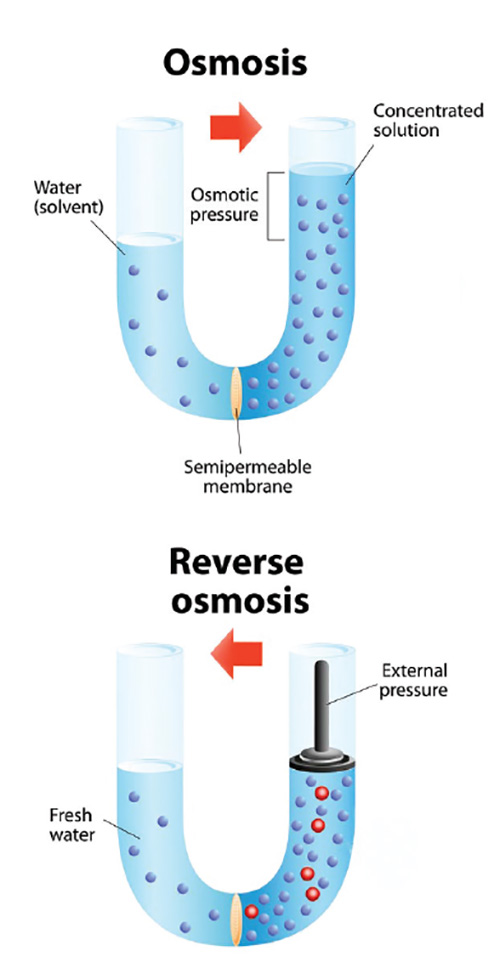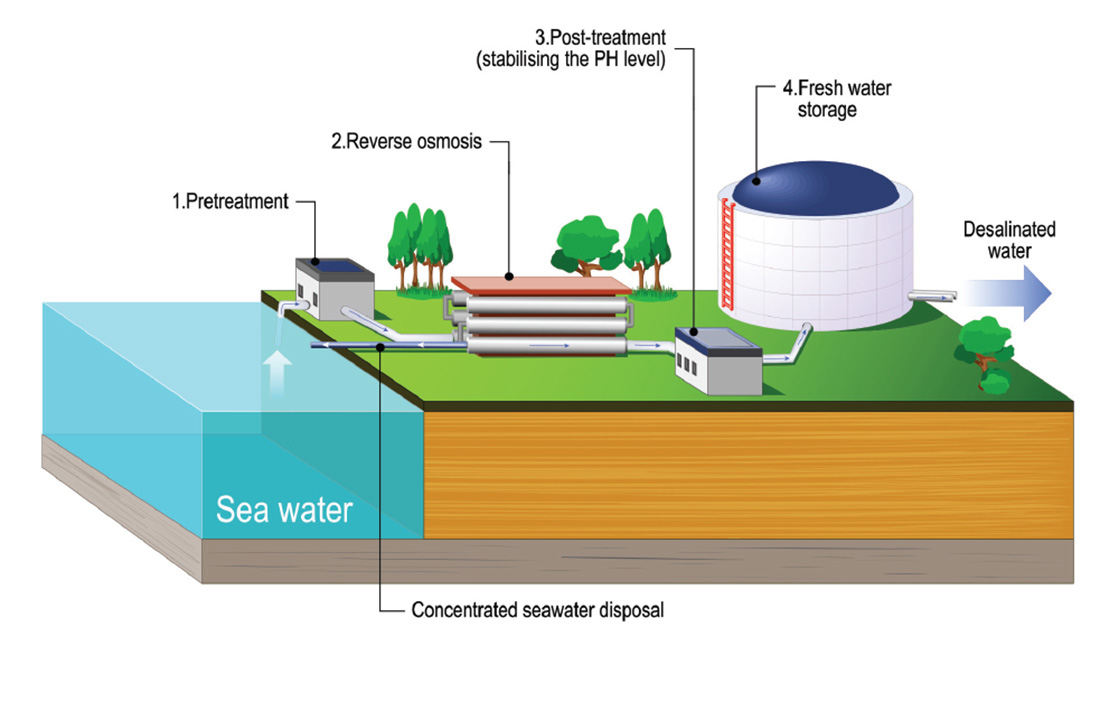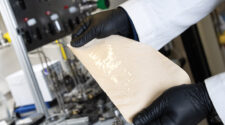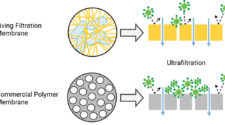Reverse osmosis (RO) is a process that is commonly employed for desalination of seawater. RO systems leverage a semi-permeable membrane to remove ions, molecules and unwanted contaminants and particles (salt in the case of desalination) from water.
In a u-tube with unsalinated water on one side, salinated water on the other side, separated by a semi-permeable membrane, the principle of osmosis means the clean (unsalinated) water will move through the membrane to dilute the salinated water in an effort to establish equilibrium between the two sides of the u-tube. In a reverse-osmosis system, pressure is applied to the salinated side of the system, forcing water to travel from the higher concentration side to the lower concentration side, thus purifying (desalinating in this case) the water.

While RO treatment is a leading method for water desalination today, it is an energy-intensive process and it requires pretreatment and post-treatment steps to effectively produce purified fresh water. Pretreatement and secondary pretreatment steps remove larger particles, such as algae and organic materials, as well as microscopic impurities so the water delivered to the RO system contains only dissolved salts and minerals. Post-treatment steps include adding minerals and disinfection with chlorine.
Other methods of desalination include electrodialysis and electrodialysis reversal, forward osmosis and membrane distillation.
Additional Material:
- “Water Desalination Process,” American Membrane Technology Association, https://www.amtaorg.com/Water_Desalination_Processes.html.
- “Key Issues in Seawater Desalination,” Lenntech, https://www.lenntech.com/processes/desalination/general/desalination-key-issue.htm.
- “How It Works – Five steps to fresh, clean drinking water,” Carlsbad Desalination Plant, https://www.carlsbaddesal.com/how-it-works.html.




![Figure 1: Differentiation with membranes based on the famous Robeson diagram that plots selectivity vs. permeability. From Reference. [4]](https://www.filtnews.com/wp-content/uploads/IFN_042023_membranes_Figure1-225x125.jpg)






